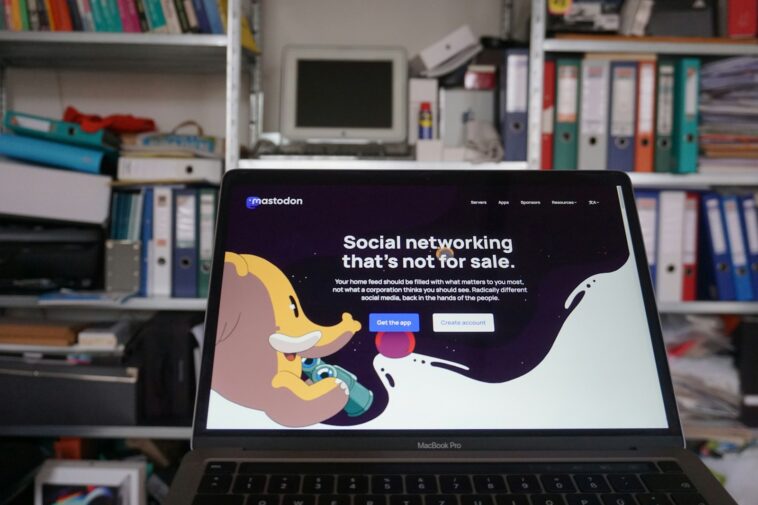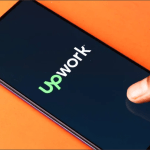If you’ve ever thought about freelancing but haven’t taken the leap, you’re not alone. I’ve met so many people who say things like, “I’d love to freelance, but…” and then follow it up with a reason that, frankly, isn’t true.
These myths—many of which I once believed myself—keep talented people stuck in jobs they don’t love, waiting for the “perfect time” to go solo.
The truth is, freelancing isn’t as mysterious or risky as it might seem. Yes, it takes effort and patience, but it’s also one of the most flexible and rewarding ways to work today.
The gig economy is booming, companies are hiring remote talent more than ever, and skilled freelancers are in high demand.
If you’re holding back because of fear or misinformation, this is the sign you’ve been waiting for to clear things up.
So let’s unpack the most common freelancing myths that might be standing between you and your next great opportunity.
Myth #1: “Freelancing Isn’t a Real Job.”
This one always makes me smile. Freelancing is a real job—just with more freedom. You’re still providing a valuable service, meeting deadlines, and managing clients, just like any business does. The main difference? You’re your own boss.
Freelancers write, design, code, edit, teach, consult, market, and build. Major companies—from startups to global brands—regularly hire freelancers because it’s efficient and cost-effective. If anything, freelancing teaches you more about real-world business skills than a 9-to-5 ever could.
So, yes—it’s as real as it gets.
Myth #2: “You Need to Quit Your Job to Start Freelancing.”
This is a big misconception. You don’t have to go all-in overnight. Many successful freelancers, myself included, started freelancing part-time. Nights, weekends, or even just a few hours a week can be enough to test the waters.
This “soft launch” approach helps you build confidence, create a portfolio, and figure out your niche—without putting your financial stability at risk.
Once you’ve got a few steady clients and a sense of direction, then you can decide if full-time freelancing makes sense for you.
The point is, freelancing doesn’t have to be an all-or-nothing decision.
Myth #3: “Freelancing Isn’t Stable.”
I get why people worry about this one. Freelancing doesn’t come with a guaranteed paycheck every two weeks.
But here’s the thing—neither do many traditional jobs anymore. Layoffs happen. Companies restructure. Industries change overnight.
In freelancing, your income depends on your effort, adaptability, and how well you market yourself. Some months might indeed be slower than others, but with consistent clients, proper planning, and a bit of financial discipline, it can be just as stable—if not more—than full-time employment.
Once you diversify your income streams (say, having three or four clients instead of one employer), you’ll realize that freelancing actually spreads your risk instead of concentrating it.
Myth #4: “You Have to Be an Expert to Start.”
This one holds a lot of people back. You don’t need to be the world’s best designer, writer, or marketer to get started—you just need to be better than someone who needs your help.
Everyone starts somewhere. You learn as you go, improve with feedback, and grow through practice.
The beauty of freelancing is that your clients often care more about results than credentials. They want someone reliable, communicative, and skilled enough to get the job done.
If you wait until you feel “ready,” you’ll never start.
Myth #5: “Freelancers Don’t Make Good Money.”
This one depends entirely on how you approach freelancing. Some freelancers undercharge and burn out—others earn six figures working from their laptops. The key difference? Understanding your value.
When you charge based on outcomes instead of hours, niche down into specific industries, and build strong client relationships, freelancing can be very profitable.
I’ve seen people double their previous salaries once they got serious about setting rates that matched their skills and results.
The secret is not to compete on price—compete on quality, reliability, and results.
Myth #6: “It’s Too Competitive.”
Yes, freelancing is competitive—but so is every career worth pursuing. The good news is that competition in freelancing isn’t about luck; it’s about positioning. If you know how to market yourself, find your niche, and communicate your value clearly, you’ll stand out.
Most people fail not because the market is saturated, but because they try to be everything to everyone.
The moment you specialize—say, “I help real estate agents with SEO” instead of “I do SEO”—you instantly become more attractive to the right clients.
Myth #7: “Clients Only Hire People with Years of Experience.”
Not true. Many clients care more about results and attitude than your years in the industry. I’ve worked with clients who told me they hired me because I seemed proactive, professional, and easy to work with—not because I had decades of experience.
If you can show that you understand a client’s needs and can deliver what they’re looking for, that’s often enough. A simple portfolio, some testimonials (even from small or unpaid projects), and good communication can go a long way.
Myth #8: “You Have to Be on Every Platform.”
You don’t need to sign up for every freelancing site under the sun. In fact, spreading yourself too thin can do more harm than good.
Pick one or two platforms that fit your niche—like Upwork, Fiverr, or LinkedIn—and focus on optimizing your profile and portfolio there. Once you start landing clients and building your reputation, referrals will become your strongest source of new work.
Quality beats quantity every time.
Myth #9: “Freelancing Means Working Alone All the Time.”
Freelancing can feel lonely at first, especially if you’re used to office life. But it doesn’t have to be isolating. There are tons of online communities, coworking spaces, and virtual meetups for freelancers in every field.
In fact, once you find your rhythm, freelancing can open you up to collaborations and friendships you’d never find in a traditional office. You can choose who you work with, what projects excite you, and how you structure your day. That’s the freedom freelancing is built on.
Myth #10: “You Need Fancy Equipment or a Huge Portfolio to Start.”
Nope. You probably already have everything you need—a computer, internet access, and a skill people are willing to pay for.
Start small. Offer your services to a few clients, friends, or local businesses. Collect feedback, refine your skills, and build from there. A simple portfolio with three solid examples can often impress more than a long list of average ones.
Remember: professionalism and reliability go a long way.
FAQs
How do I find my first freelancing client?
Start with what you already know. Reach out to your network, post on social media, or join freelancing platforms. Even one small project can lead to referrals and momentum.
How much should I charge as a beginner?
Research your niche and location. Start with a fair rate that values your time but leaves room to grow. As your skills and confidence increase, raise your rates gradually.
What skills are most in demand for freelancers right now?
Writing, graphic design, web development, marketing, and virtual assistance are always in demand. But niche skills—like email automation, data visualization, or podcast editing—can help you stand out.
How do I manage inconsistent income?
Budget wisely, save during good months, and aim to have at least 2–3 months of expenses saved. Diversifying your client base also helps even things out.
Conclusion
Freelancing isn’t some exclusive club or mysterious career path—it’s simply a modern way to take control of your time, skills, and income. The biggest barrier isn’t competition or experience; it’s believing the myths that say you can’t.
The truth is, you absolutely can.
So here’s my question to you: what’s the one myth that’s been holding you back—and what’s stopping you from proving it wrong today?





GIPHY App Key not set. Please check settings